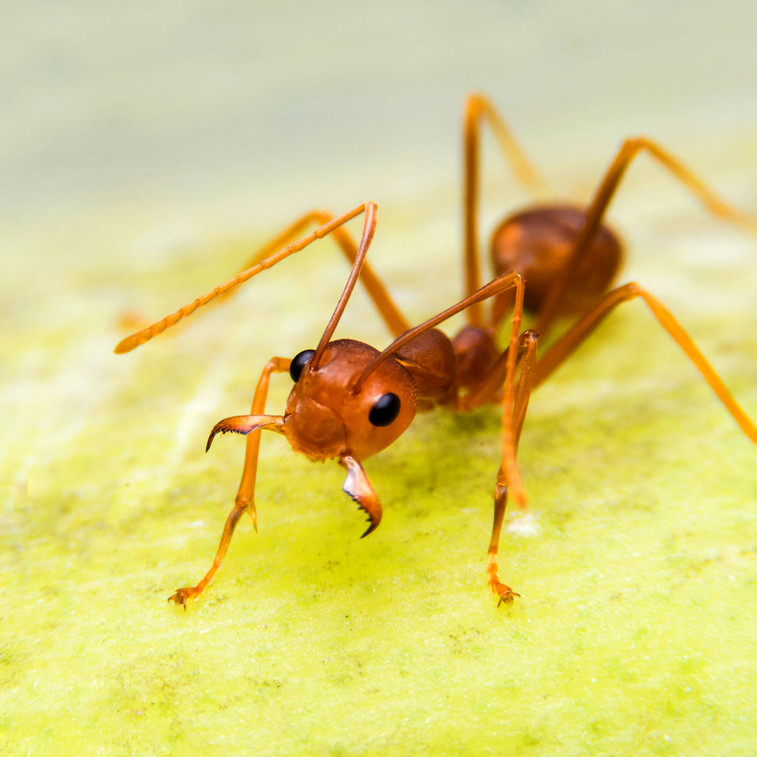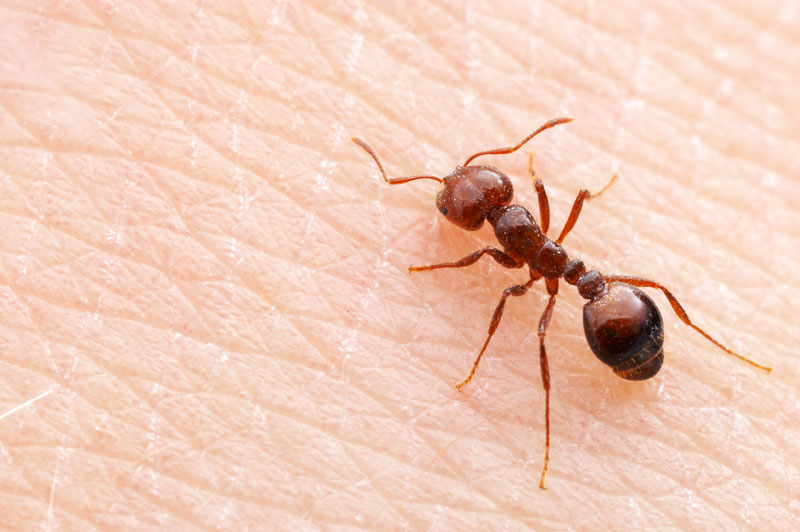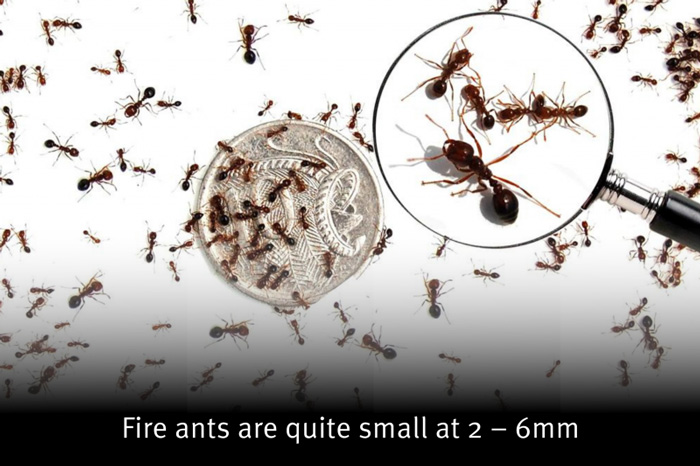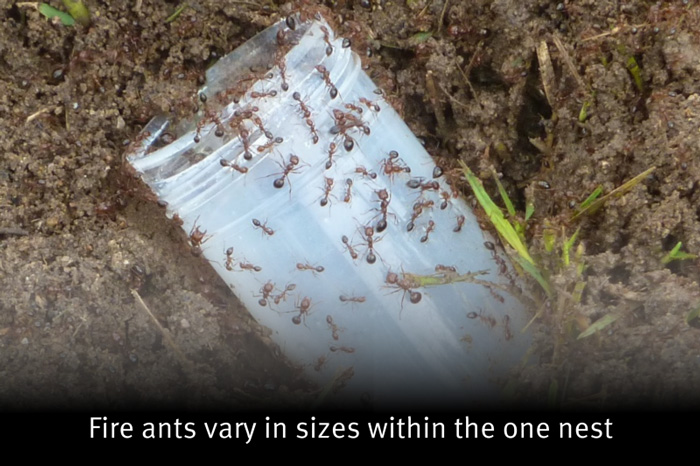
Battling Pests: The Imported Red Fire Ant Menace
Posted by Dale Parsons on 25th Jul 2023

Imported Red Fire Ants
The invader is small, aggressive, and has a fiery bite. It's the Imported Red Fire Ant, a pest that has made its way from South America into South East Queensland. These minute monsters are not just an annoyance but a severe ecological and public health issue, infiltrating our homes, gardens, and public spaces with alarming perseverance. Originating from the floodplains of Brazil, it is thought these relentless creatures hitched a ride in shipping containers, crossing oceans and continents, eventually making their first unwelcome appearance in Australia in 2001. Since then, they've proliferated rapidly, particularly across the green expanse of South East Queensland. The issue is pressing and demands urgent attention, for the damage caused by these ants is far more substantial than the physical pain they inflict. Their invasion threatens not just us but the very biodiversity of our environment.
The Red Fire Ant Invasion Explained
Red fire ants, or Solenopsis invicta, are native to the floodplains of South America, specifically Brazil. They were first introduced to Australia around 2001, likely through contaminated soil used as ballast in cargo ships. The first sighting was in Brisbane, South East Queensland. However, they soon spread, primarily due to their aggressive colonisation behaviour and lack of natural predators in the Australian ecosystem.
Their rapid spread in South East Queensland
South East Queensland offers an ideal environment for these foreign invaders. The region's mild winters, abundant rainfall, and fertile soils provide perfect conditions for fire ants to thrive and multiply. Besides their preference for the region's climate, fire ants are extraordinarily tenacious in their ability to reproduce and colonise new territories. A single mature queen can lay up to 5000 eggs per day, creating colonies with hundreds of thousands of ants. And, each colony can have multiple queens, accelerating their spread even more.
Unfortunately, human activities have inadvertently assisted their dispersion. Moving infested soil, potted plants, or farming equipment can transport these ants far beyond their natural dispersal capability. As a result, they've been able to infiltrate residential areas, farmlands, and natural ecosystems rapidly, increasing their footprint across South East Queensland.
The combination of ideal environmental conditions, the ants' aggressive behaviour, and human-facilitated spread has led to the swift and pervasive invasion of red fire ants in South East Queensland. This rapid expansion has given rise to significant concerns for the region's biodiversity, agriculture, public health, and overall quality of life. Therefore, understanding the nature of this invasion is the first step towards mounting an effective response to this growing threat.
The Red Fire Ant Threat
Impacts on humans, including painful bites, allergic reactions, and potential fatalities

Imported Red Fire Ant Identification: Image sourced thanks to: www.fireants.org.au
The red fire ant doesn't discriminate when it comes to inflicting pain and harm. The sting from a fire ant delivers a potent venom that causes intense burning sensations—earning them their fiery name. In many individuals, these bites transform into itchy, pus-filled blisters that can take weeks to heal. But it's not just about enduring a fiery sting. Some individuals experience severe allergic reactions that could lead to anaphylactic shock, a potentially fatal condition if not immediately treated. The threat is real and severe. Data from the United States, where fire ants are widespread, indicate that 85-100 people succumb to fire ant bites each year.
Harmful effects on native flora, fauna, and agriculture
The red fire ant's environmental footprint extends beyond human suffering. These ants are ecological bulldozers, disrupting native biodiversity by preying on small animals and insects. Experts predict severe declines in native wildlife if the fire ant invasion is left unchecked, with potential losses of up to 38% of mammals like the platypus and echidna, 45% of birds like the rainbow bee-eater and bush stone-curlew, 69% of reptiles like the green turtle and flatback turtle, and a staggering 95% of frogs like the ornate burrowing frog. Their impact on agriculture is equally devastating, causing considerable damage to crops and livestock.
Destructive impacts on property and infrastructure
These fiery invaders are also a nightmare for property owners. They build large, mound-like nests that can damage lawns and agricultural lands. They can also cause significant damage to sensitive electrical equipment like air conditioners, meter boxes, and traffic signal boxes, making them a costly and troublesome pest.
The red fire ant is a multidimensional menace that requires an integrated response.
Current Measures Against the Red Fire Ant Invasion
Governmental response to the fire ant menace
The Australian government has recognised the urgency and gravity of the fire ant invasion, committing significant resources to its containment and eradication. An additional annual budget of $60 million has been allocated federally, complemented by an $80 million contribution from the New South Wales government. This funding supports the National Red Import Fire Ant Eradication Program, a strategic initiative designed to control and ultimately exterminate these destructive pests.
Control programs and the need for increased funding
However, critics argue that the current level of funding is inadequate given the scale and potential impact of the problem. The Invasive Species Council, in particular, points to a 2021 review that called for an annual budget of $260 million to eradicate the pests before the Brisbane Olympics in 2030. The challenge of eradicating fire ants goes beyond simple extermination, requiring extensive surveillance, community education, and ongoing research into more effective control methods.
Border checks and calls for stronger measures
Concerns have also been voiced about the efficacy of current biosecurity measures in preventing the southward spread of fire ants. NSW farmers have called for reintroducing border checkpoints to inspect goods moving from Queensland into NSW, as these could serve as potential transport for fire ants. Organisations like the Greenlife Industry Australia (GIA) have backed these calls, emphasising the need for an urgent overhaul of the eradication program. From these perspectives, the battle against the red fire ant invasion is about exterminating the present colonies and preventing future invasions and creating a robust biosecurity infrastructure.
Antstar Insecticide - A Handy Aid in Combatting Ant Problems
Antstar Insecticide, known for its effectiveness in tackling general ant issues, provides relief for households besieged by common ant species. The product is easy to use and shows quick results, making it a popular choice for domestic ant control.
Antstar is also permitted for use on Imported Red Fire Ants according to APVMA Minor Use Permit PER13959 (as it contains 2 g/kg Bifenthrin); however, it's crucial to point out that because of the significant biosecurity threat that Fire Ants possess, if you encounter a fire ant colony, report it immediately to the National Fire Ant Eradication Program, who have the necessary expertise and resources to handle this threat effectively.
What to Do When You Spot a Fire Ant Colony

Imported Red Fire Ant Identification: Image sourced thanks to: www.fireants.org.au
When you encounter a fire ant mound, the first rule of thumb is – don't touch. These ants are aggressive defenders of their colonies and can deliver painful, sometimes deadly stings. Do not attempt to disturb the mound or kill the ants yourself.
Reporting is your most important course of action. Swift reporting can help prevent the spread of these dangerous pests. If you're in Queensland, report the sighting online or call 13 25 23. You will need to answer questions to assist authorities in determining whether an immediate visit to your property is necessary.
Once reported, authorised officers from the National Fire Ant Eradication Program may need to enter your property to inspect and treat the infestation. The officers, identifiable by their Queensland Government ID, will utilise a staged, rolling treatment strategy to tackle the menace. Rest assured, their goal is the same as yours: to eradicate the fire ant threat from your property and the local environment.
The red fire ant invasion in South East Queensland is more than an ecological crisis; it's a social, economic, and public health challenge. Each one of us plays a pivotal role in the solution. By reporting sightings promptly, we can assist authorities in early detection and effective management. However, the battle doesn't end there. This fight needs more than boots on the ground; it demands our voices to be heard.
The call for increased governmental investment in eradicating this invasive species has never been more urgent. We must stand with farmers, environmental bodies, and industry representatives in this demand. If we fail to contain this invasion, we risk catastrophic losses in our native wildlife and significant disruptions in our way of life. Remember, the war against red fire ants is not just the government's war; it's our war. Let's wage it together.
References & Further Reading
National Fire Ant Eradication Program (fireants.org.au)
National Fire Ant Eradication Program - Identifying Fire Ants
Red Fire Ants Now 12km North of Queensland-NSW Border - ABC News
